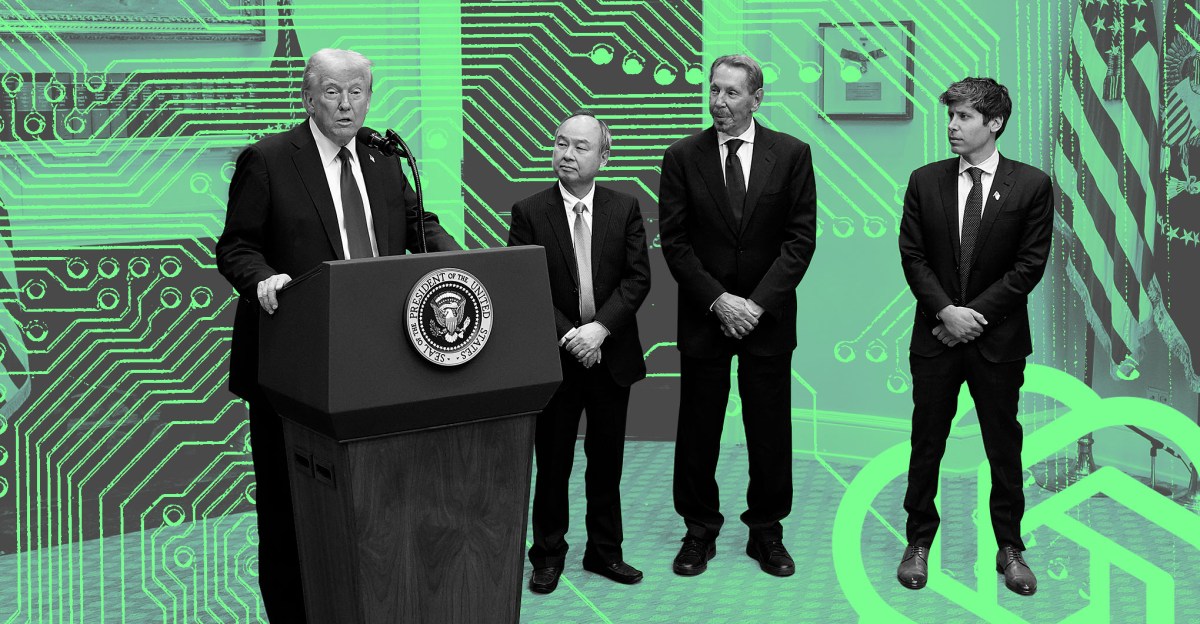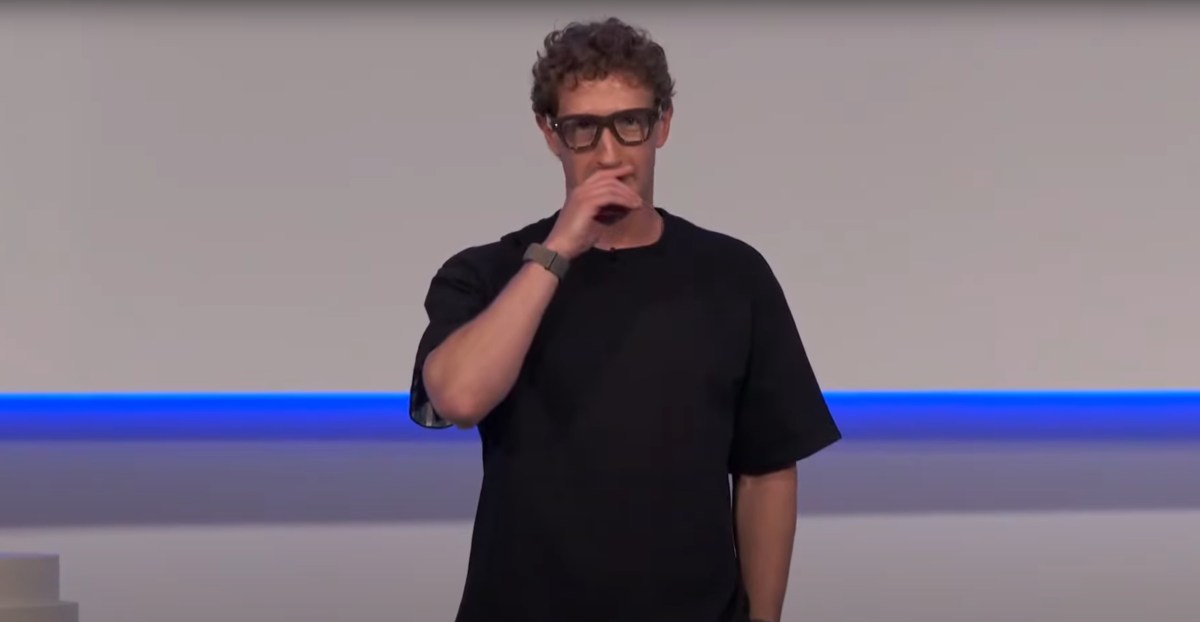
AI super PACs, the hottest investment in tech
Sources: https://www.theverge.com/regulator-newsletter/766105/ai-super-pac-tech-investments, theverge.com
TL;DR
- Leading The Future (LTF) is a $100 million pro AI political operation described as a structured ecosystem that blends a super PAC with a 501(c)(4) and a state elections PAC to push AI friendly candidates by the 2026 midterms.
- Initial commitments come from billionaire megadonors Greg and Anna Brockman, Ron Conway, and Joe Lonsdale, along with the venture firm Andreessen Horowitz and the AI company Perplexity; more participants are expected.
- The arrangement reflects a broader shift in tech political giving after Citizens United v FEC, with ongoing debates about how money translates into political influence.
- The Verge also covers Trump related tech ventures such as Trump Mobile and TMTG, illustrating the broader meme driven money and branding dynamics in tech politics.
- The article frames LTF as a classic Washington lobbying vehicle repackaged for the AI era, highlighting regulatory risk for the technology sector across states.
Context and background
Since the Citizens United v FEC decision, there has been ongoing discussion about how corporations and billionaires can participate in political discourse and influence elections. The Verge notes that while there are legal limits to direct donations to candidates, parties, or causes, the modern approach has shifted toward more creative funding structures. Prominent tech megadonors have historically funded candidate campaigns and think tanks, but a second tier of donors has emerged that emphasizes individual political views and branding as part of investments. The piece highlights Peter Thiel’s early candidate cultivation, Mark Zuckerberg’s large 2020 voter access donation, and Elon Musk’s recent political philanthropy and business moves. The report also underscores limits to one person wielding power through money alone, with references to Musk reexamining political plans and Zuckerberg facing political backlash over donations. The Verge’s broader narrative includes how tech money intersects with regulatory attention: the growth of AI regulation across states, coupled with frustration over the pace and nature of federal AI legislation. Against this backdrop, Leading The Future is presented not just as fundraising but as a structural approach to influence public policy in a way that mirrors established lobbying tools while aiming to capitalize on AI policy momentum. In addition to money in politics, the piece discusses Trump branded tech ventures as a case study in meme driven monetization. Trump Media and Technology Group (TMTG) and related products are described as value propositions that depend on public sentiment, with TMTG reporting a net loss in a recent quarter. The broader takeaway is that political branding and meme economics can create an ecosystem where political identity and technology ventures intertwine, even when underlying businesses are not profitable.
What’s new
Leading The Future is described as a $100 million political operation designed to identify and promote pro AI candidates and causes in elections. The Verge characterizes its structure as a blended ecosystem that combines:
- a super PAC capable of spending unlimited money on political messaging,
- a 501(c)(4) that can spend money on political lobbying but with regulatory limits,
- a state elections focused PAC, and
- a plan to elect AI friendly candidates to state legislatures and Congress by the 2026 midterm elections. The press release describing LTF emphasizes its aim to build a broad, multi-vehicle campaign apparatus, representative of a modern Washington lobbying playbook adapted for AI policy. Initial funding commitments have been reported from a group of notable figures and organizations:
- Greg and Anna Brockman
- Ron Conway
- Joe Lonsdale
- Andreessen Horowitz
- Perplexity (AI company) The coverage also notes that more participants are expected to join in the weeks ahead, reflecting the dynamic and expanding nature of AI policy advocacy. The larger context is the rising pace of AI regulation across states and the perceived need among industry participants to shape regulatory outcomes in a favorable light. The Verge positions LTF as a classic lobbying vehicle repackaged for the AI era, blending traditional business interests with new political finance vehicles. This framing suggests that even as regulatory focus intensifies, industry stakeholders seek structured, scalable ways to influence policy toward a pro business and pro innovation stance. In related coverage, the article revisits the broader theme of tech money in politics through Trump affiliated ventures. It recounts how Trump Mobile and other branded technology efforts fit into a broader pattern of meme driven investments tied to political brands. The discussion highlights how branding, celebrity associations, and perceived value of political alignment can influence investor sentiment even when the underlying products may not be traditional profit centers.
Why it matters (impact for developers/enterprises)
For developers and technology enterprises, the emergence of complex political funding architectures like LTF signals several implications:
- Regulatory risk and policy trajectory: The explosion of AI regulation proposals across states can create uncertain operating environments. Industry players may increasingly seek to influence policy outcomes through organized political finance structures, which can shape funding, compliance requirements, and standards.
- Alignment between policy and product strategy: As policy debates center on AI safety, transparency, and workforce impact, companies may push for policies that reflect their business models and R&D plans. A prominent, well-funded ecosystem seeking to promote AI friendly candidates could affect legislative priorities at the state level.
- Market perception and branding effects: The broader landscape of political money in tech, including meme driven branding and celebrity involvement, can influence public perception of tech firms and their governance choices. This can affect talent recruitment, partnerships, and customer trust, even if individual ventures are not profitable.
- Governance and disclosure considerations: The use of multiple entities to support political aims—super PACs, 501(c)(4) organizations, and state level PACs—highlights the complexity of current campaign finance mechanisms. Enterprises should monitor regulatory developments, disclosure requirements, and governance rules that apply to political activities by companies and executives.
Technical details or Implementation
The described structure for LTF is labeled as a “structured ecosystem” that blends different campaign finance vehicles to target candidates and policies. The key elements include: | Element | What it does
| --- |
|---|
| Super PAC |
| 501(c)(4) |
| State elections PAC |
| Overall plan |
| This configuration is described as a modern Washington lobbying tool adapted to the AI policy landscape. The effort is led by a coalition of funders including Greg and Anna Brockman, Ron Conway, Joe Lonsdale, Andreessen Horowitz, and Perplexity, with expectations of additional participants in the near term. |
| From a practical standpoint, the initiative reflects strategic alignment among high profile tech patrons and venture capital entities who see AI regulation as a defining issue for the industry. The approach combines fundraising scale with a multi-vehicle campaign structure intended to maximize messaging reach and legislative influence while navigating the intricate rules around political spending. |
Key takeaways
- LTF represents a notable deployment of a blended political finance structure aimed at accelerating AI policy outcomes by 2026.
- A mix of high profile donors and a major VC and AI company are coordinating behind this effort, signaling strong cross sector interest in AI regulation and policy direction.
- The development sits within a broader historical context of tech money influencing politics post Citizens United, illustrating ongoing shifts in how political influence is organized in the tech era.
- The Verge frames LTF as a classic lobbying vehicle updated for AI policy, underscoring potential regulatory implications for tech developers and enterprises across states.
- Separately, coverage of Trump branded tech ventures shows how meme driven branding intersects with politics and technology in contemporary discourse.
FAQ
-
What is Leading The Future?
$100 million political operation described as a structured ecosystem combining a super PAC, a 501(c)(4), and a state elections PAC to promote AI friendly candidates by the 2026 midterms.
-
Who is funding LTF?
Reported commitments include Greg and Anna Brockman, Ron Conway, Joe Lonsdale, Andreessen Horowitz, and Perplexity; more participants are expected.
-
Why is this relevant to AI policy?
The effort appears in the context of rising AI regulation at the state level and ongoing debates about how industry interests shape policy outcomes.
-
How does the structure affect campaign finance?
It combines multiple vehicle types to influence messaging and lobbying efforts, reflecting modern approaches to political advocacy in tech.
References
- The Verge. AI super PACs, the hottest investment in tech. https://www.theverge.com/regulator-newsletter/766105/ai-super-pac-tech-investments
- The Verge Regulator newsletter coverage referenced in this article
More news
First look at the Google Home app powered by Gemini
The Verge reports Google is updating the Google Home app to bring Gemini features, including an Ask Home search bar, a redesigned UI, and Gemini-driven controls for the home.
Meta’s failed Live AI smart glasses demos had nothing to do with Wi‑Fi, CTO explains
Meta’s live demos of Ray-Ban smart glasses with Live AI faced embarrassing failures. CTO Andrew Bosworth explains the causes, including self-inflicted traffic and a rare video-call bug, and notes the bug is fixed.
OpenAI reportedly developing smart speaker, glasses, voice recorder, and pin with Jony Ive
OpenAI is reportedly exploring a family of AI devices with Apple's former design chief Jony Ive, including a screen-free smart speaker, smart glasses, a voice recorder, and a wearable pin, with release targeted for late 2026 or early 2027. The Information cites sources with direct knowledge.
Shadow Leak shows how ChatGPT agents can exfiltrate Gmail data via prompt injection
Security researchers demonstrated a prompt-injection attack called Shadow Leak that leveraged ChatGPT’s Deep Research to covertly extract data from a Gmail inbox. OpenAI patched the flaw; the case highlights risks of agentic AI.
How chatbots and their makers are enabling AI psychosis
Explores AI psychosis, teen safety, and legal concerns as chatbots proliferate, based on Kashmir Hill's reporting for The Verge.
Google expands Gemini in Chrome with cross-platform rollout and no membership fee
Gemini AI in Chrome gains access to tabs, history, and Google properties, rolling out to Mac and Windows in the US without a fee, and enabling task automation and Workspace integrations.





